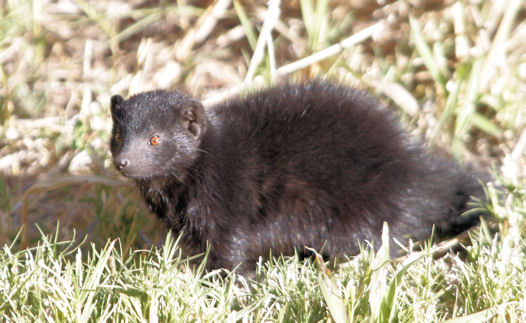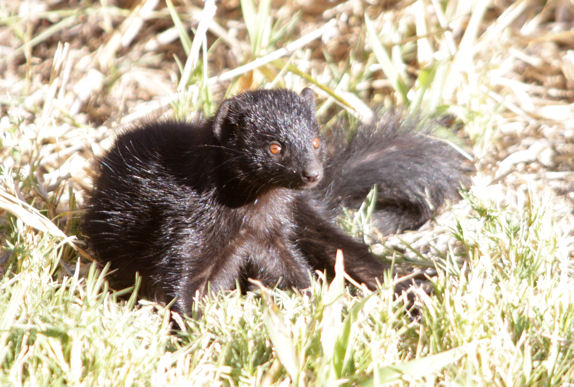black mongoose
Hi all
Does any one have any thoughts, or any up to date info, on the specific status of black mongoose Galerella nigrata?
HMW seems to treat it as a morph of common slender mongoose. Whereas others treat it as a full species:
http://www.berglabs.org/people/sara/…0UQ%202007.pdf
I took the attached picture at Waterberg, Namibia, presuming it to be this ‘species’. It does, however, look rather similar to some photos I’ve seen labelled dwarf mongooose; I know some populations of this species get very dark. So any thoughts on the photo would also be appreciated.
Cheers
Steve
10 Comments
-
Jon Hall
Hi Steve, it sort of looks like a Dwarf to me though its hard to tell from this picture and I am far from certain. I think Black Mongooses are a good species – and IUCN suggests there might even be two flavours (Herpestes flavescens, the Kakoveld Slender Mongoose, and another called Myonax nigratus). I looked for them around Etosha and bumped into an Australian doing her phd on them. I couldn’t find one but they are not uncommon. I understand that they like very rocky habitats – what is Waterberg habitat like?
-
-
hardakerwildlife
The dark morphs of Dwarf Mongoose are well known from that particular area and they probably occur in their highest densities there out of any other place in the entire Southern African subregion. Apart from the size, facial structure is also of use here (Slenders have a “longer” and less angled face if that makes any sense?) – to my mind, your animals are definitely Dwarf Mongoose. Strangely enough, even although people always seems to see these dark morphs there and tell me how regular they are, I have never personally been lucky enough to see one there myself, despite a number of visits to the area!
-
maurice tijm
I always thougth that Waterberg is outside the Kakaoveld Slender Mongoose his range, but looking at the IUCN red list information the park is within the animals distribution (looks like a publication by ‘Taylor’ is in press). You must have thought about this but: was the animal alone or in a small party? Kakaoveld Slender Mongooses are usually solitary, Dwarf’s usually not.
Anyway, looks like you have sorted it out already. I have spent 1 night at Waterberg in 2007 arriving to late and leaving to early to see any Dwarf Mongoose there..
Thanks for sharing,
Leave a Reply
You must be logged in to post a comment.




Vladimir Dinets
Dwarf, slender and marsh mongooses all have black morphs. There are photos of black dwarfies from Waterberg in HMW, by the way 🙂 I’ve seen a black slender mongoose in Harenna Forest in Ethiopia. Apparently black phases are more common in forested highlands, just as in servals.
That said, slender mongooses tend to have lighter-colored eyes than dwarf mongooses. I am not sure where the guy on the photo falls. If you saw the individual on the photo, it should’ve been pretty obvious: slenders look and move like large stoats, while dwarfies are much more stocky and look like typical mongooses, just tiny.